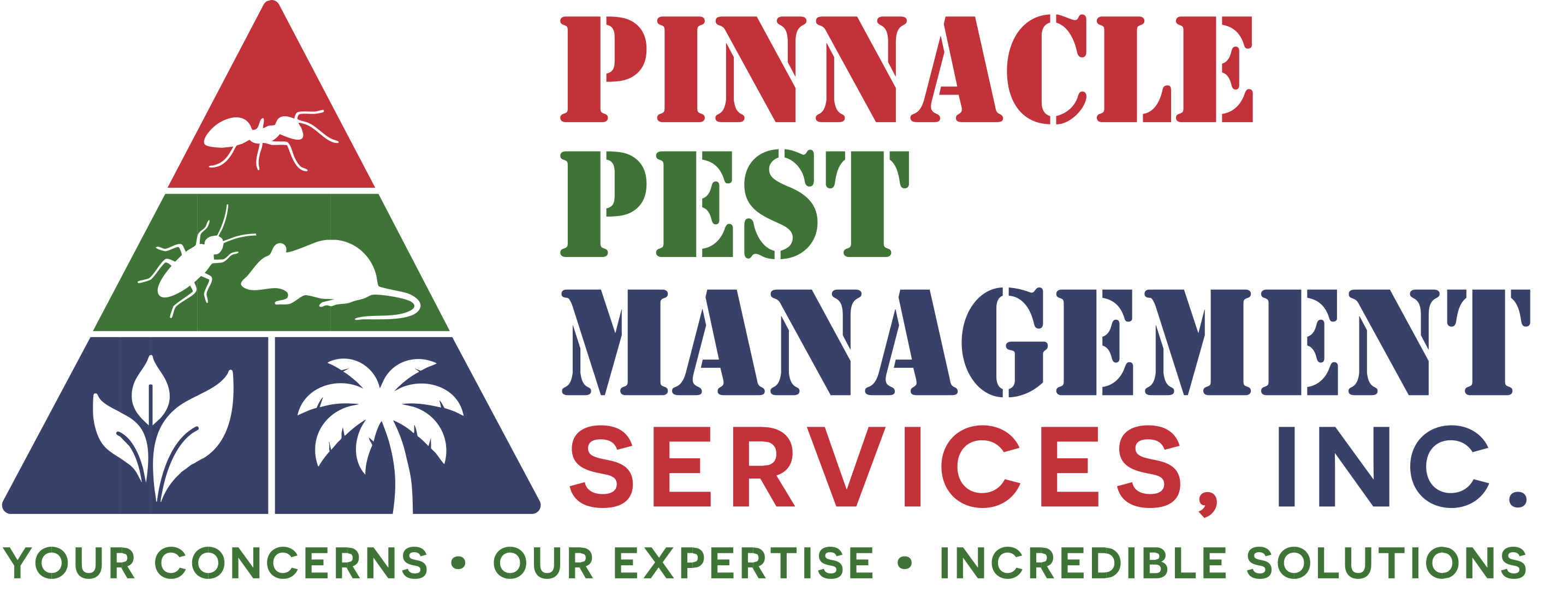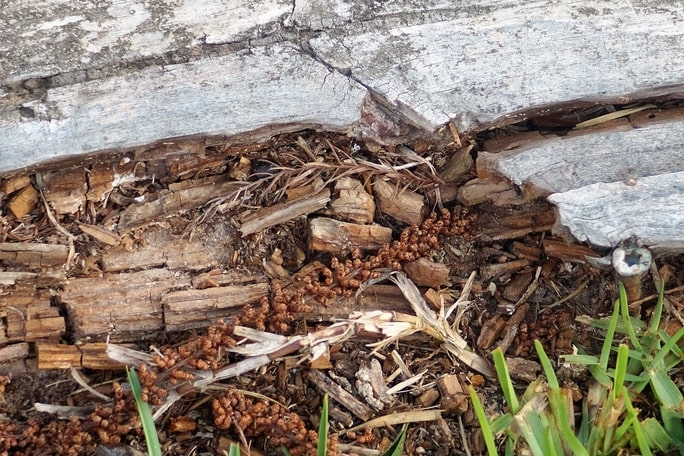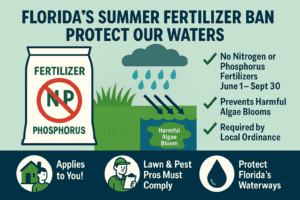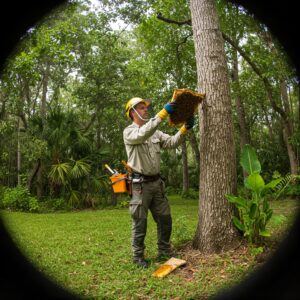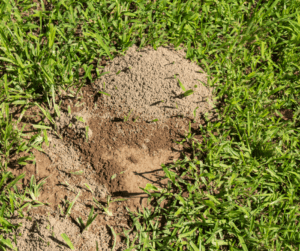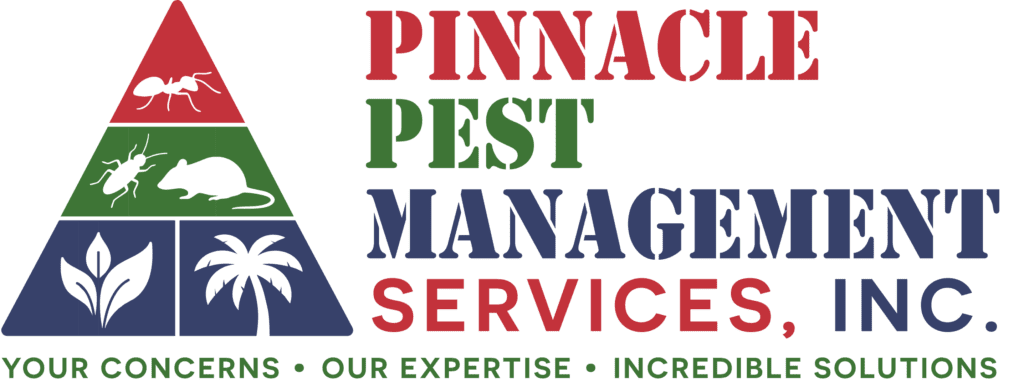A termite infestation can cause extensive structural damage to homes if left unchecked. These wood-destroying insects are difficult to detect, as they are small, silent and cleverly conceal their activities. Since homeowners may not recognize a termite infestation until the damage is done, it is important to become aware of early signs of an impending problem.
This guide by Pinnacle Pest Solutions in Fort Myers Florida will help you identify the environmental and physical evidence that suggests you have a termite infestation in your home. It will explain how to inspect both indoors and outdoors for certain signs of termites like tunneling, frass (droppings), mudding, blistered wood and other telltale indicators that your home may be at risk for a termite infestation. With this knowledge in hand, you can take action quickly if it turns out that your home has been invaded by these unwelcome guests.
Signs of Termite Activity
Termites can cause a great deal of damage to your home, so it is important to be able to identify telltale signs of a termite infestation. The first step to take is to look for signs of the insects themselves. Termite activity can often be identified by the presence of mud tubes, which the insects build to protect their colonies from predators. You should also be on the lookout for piles of wings, which termites shed during swarming. Other signs include structural damage, such as sagging floors, or visible tunnels in wood.
Swarming Termites
One of the first signs of termite activity is “swarming,” when winged reproductive male and female termites leave their nests in search of new places to start colonies. This typically happens in the spring and fall, or after a rainstorm. Swarming termites usually shed their wings after a short fly and are often found near windows or door frames. Their presence alone may not be cause for concern; only if there is persistent swarming should you take further action.
Termite swarmers look like flying ants, but can be differentiated by a few key features:
- Termites have straight, bead-like antennas while ants have bent antennas
- Termites have two pairs of wings that are equal in size and shape whereas ants have one larger set
- If the wings are still attached, you may be able to tell the difference between an ant’s three distinct body regions (head, thorax, abdomen) from a termite’s general cigar shape
If you suspect swarms are coming from inside your home instead of outside your home – known as internal swarming – it is likely indicative of a more serious problem as this means that there is an established nest located inside your walls or other structures around your home. Contacting pest control specialists should be done immediately as dealing with an infestation sooner rather than later could save you time and money down the line.
Mud Tubes
One of the most obvious signs of termite activity are mud tubes. A termite’s diet is made up mostly of cellulose, which is found in wood, and they can’t get it while outside exposed to the elements. To get to food sources, they construct narrow, pencil-shaped mud tubes which protect them on their journey from the ground up into your walls. You may find these mud tubes around windowsills or other molding or ceiling fixtures that connect directly to your home’s exterior walls. It is especially important to check for this activity if you suspect any cracking or water damage as these are two of the most common entry points for termites. It is important to note that not all form of subterranean termites build these mud tubes meaning you should always be on the lookout for other signs of infestation such as discarded wings or hollowed out wood surfaces.
Discarded Wings
One of the most obvious and easily recognized signs of termite activity is the presence of discarded wings. When flying termites swarm to find new places to build their colonies, after mating they discard these wings.It is not uncommon to find piles of wings near windowsills and other areas where the light may be coming in from outdoors.
In addition to piles of discarded wings, frass or fecal pellets may also be noticed near windowsills or any area through which light is coming into the space from outdoors. Termites consume wood and other materials as part of their diet. As they digest this material, frass is what passes through them, eventually piling up near areas that draw their attention because of light or noise coming from outside. The presence of these fecal pellets can indicate a large colony very close by, as well as possible ongoing damage within your walls or in your floor joists if any wood was consumed by the colony building activity.
Wood Damage
Signs of termite activity in a home that many homeowners can spot on their own is wood damage. Though not exclusively caused by termites, they are one of the primary pests that cause this type of destruction. Wood damage can appear in the form of structures or furnishings suddenly beginning to buckle, sag, or just generally seem more porous or “spongy” than usual. This could be due to liquid secretions, produced as part of the construction process by soldier termites, as well as physical damage done by the other workers. Look for sawdust in and around the furniture items to confirm an infestation if you haven’t already seen any visible activity around these locations.
Some other telltale signs include weakened floorboards and door frames, bubble spots on paint or wallpaper covering a wall behind wooden furniture, small holes filled with fecal matter from wood-devouring insects like carpenter ants and beetles, swarms of small flying insects around windowsills (often near light sources), evidence of mud tubes traversing along walls (this is how subterranean colonies navigate between food supplies and nest sites), and wings left behind by swarmers during mating swarms. All these are indicators that your home may be under attack from destructive pest infestations like termite activity. If you suspect an issue in your home it’s important to contact a certified pest management professional immediately for help identifying and remedying any potential pest problem!
Hollow-sounding Wood
One of the more common signs of an active subterranean and drywood termite infestation is hollow sounding wood. Termite tunnels, also known as shelter tubes, are constructed from finely milled wooden particles mixed with saliva and feces, to build a protective passageway between their nest and the food source.
Termites feed primarily on cellulose-based material such as wood and plant matter, while they typically avoid synthetic materials and use these shelter tubes to move throughout your home. Casings created by the chewing occurring near wooden structures will give off a hollow sound when tapped or probed with a tool such as a screwdriver.
Termites may be present or absent in these areas so it is best to consult with a professional who can identify for certain if termite damage has already occurred on your property in Fort Myers Florida or if proactive steps can be taken to protect your home from future infestations.
Prevention Tips
Termites can cause significant damage to your home if spotted too late. That is why it is important to be on the lookout for signs of a termite infestation in your home. Fortunately, there are some prevention tips you can follow to help ensure termites don’t creep into your home without your knowledge. In this guide, Pinnacle Pest Solutions in Fort Myers Florida will cover the different prevention tips so you can be more vigilant when it comes to spotting a termite infestation in your home.
Avoid Moisture Buildup
Conditions such as excessive moisture are highly attractive to termites, and such conditions often occur in homes. A constant dampness is especially attractive to the subterranean termite, which nests at ground level near the house foundation and may enter through cracks in the home’s foundation. If you suspect that your humidity is too high, check with a professional in home air-quality assurance who can advise you on ventilation or dehumidifying strategies.
Also, look for items that contain water and inadvertently create a perfect environment for colonies of these bugs. Drain spouts from gutters should drain away from the house and have splash blocks installed to prevent water from staying near your home’s foundation. At the same time, check for faulty plumbing or leaky pipes both inside and outside of your home. Proper drainage away from your house is an effective way to avoid attracting subterranean termites which feed on cellulose-based material such as wood.
For a comprehensive step-by-step prevention guide against this infestation, please refer to Pinnacle Pest Solutions’ online guide: How To Spot A Termite Infestation In Your Home?
Remove Wood and Cellulose Debris
Removing wood and cellulose debris from around your property is a great way to reduce the risk of a termite infestation in and around your home. Termites love the moist, warm environment provided by wood piles, logs, and other organic materials that can be found in residential areas. Make sure to keep your yard clean and clear of any potential food sources for termites – this includes everything from mulch and sawdust to stumps, treetops, leaves, etc. Taking these preventive measures can help greatly reduce the chances of hosting a termite population on your property.
Seal Cracks and Openings
Termites thrive in damp, dark and humid environments — making them an unwelcome guest in many homes. To ensure that an infestation doesn’t take hold, it’s important to seal all cracks and openings around windows, doors and vents. If you find any access points into your home that are not already sealed, you should seal them immediately. Doing so helps prevent termites from entering your home through small openings — such as around window frames or door thresholds — as well as reducing opportunities for humidity to build up inside the home, which can create ideal conditions for a termite outbreak.
Additionally, sealing cracks will help deter other pests from getting into your house — or if they do get in — it will make it harder for them to move from one room to the next. If left unaddressed vulnerabilities like this provide pests with an unrestricted corridor within your home providing ample nesting and breeding grounds for an infestation to grow rapidly.
One of the best ways to prevent a full-fledged infestation is by taking preventative measures such as sealing any and all possible entry points found on the exterior of your home; which is why it’s essential to inspect these areas regularly for signs of damage or wear-and-tear that could provide termites with access into your living space. To truly protect against potential problems its best practice to spend time proactively assessing exterior walls, doors frames and windowsills regularly with caulk or sealant — ensuring that no potential access points remain open or vulnerable.
Professional Pest Control Services
If you suspect that you have a termite infestation in your home, it’s important to take professional pest control services. Professional pest control experts like Pinnacle Pest Solutions in Fort Myers, Florida have the right tools, experience and knowledge to accurately identify the signs of a termite infestation and provide you with the right solutions to effectively eliminate them and protect your home from future infestation. By taking advantage of professional pest control services, you can rest assured that the job will be done right and that your home is protected.
Pest Inspection and Evaluation
Identifying a pest infestation in your home early is key to avoiding costly repairs. Professional pest control services can provide an inspection and evaluation of your home for pests of all kinds. An experienced inspector will use tools, such as additional lighting sources, mirrors, and magnification systems to inspect spaces that are typically not visually accessible without special tools. Your pest inspector will also a take moisture readings with specialized meters that measure the current levels in building materials to determine the likelihood of an infestation or rotting within certain areas of your home.
After completing the initial inspection, your pest professional will evaluate any visible signs of past or current termite infestations including mud tubes (shelter tubes) used by subterranean termites along walls or various structures, visible droppings/shed wings near windowsills/walls/doors, stained wood floors due to excessive moisture absorption and visible signs of carpenter ant damage (sawdust).
If an active infestation is found, the inspector may recommend additional specialized tests such as X-ray imaging (ClearX) to detect any additional termite activity beneath surfaces or in inaccessible locations. The ultimate goal during the comprehensive inspection and evaluation process is to pinpoint areas where potential for future infestations exists so preventive action can be taken if deemed necessary by your service provider.
Termite Treatment and Prevention
When it comes to termite control, prevention is always better than treatment. Termite treatment requires specialized knowledge of termites and the steps needed to eliminate them. Therefore, professional pest control services are highly recommended when it comes to dealing with a termite infestation.
The goal of termite control is two-fold: eliminating existing colonies and preventing future infestations from occurring. Professional pest control companies have the expertise and experience to handle all types of termites, including subterranean, drywood, dampwood, Formosan and more. Some of the methods used for termite treatment and prevention include:
•Baiting – Baiting systems are designed to deliver a toxicant specific for a particular species (usually subterranean). Baits are most effective when placed in use during times of increased activity – typically after rain or warm weather conditions.
•Extermination – This method applies insecticides directly onto areas where there are signs of activity as well as surrounding areas as protection against potential colonies that may be nearby or seeking shelter in dark crevices or cracks in your home’s foundation.
•Fumigation – This process involves completely filling an area with a fumigant vapor which penetrates into deep crevices and cracks, killing many different life stages of certain species such as drywood or Formosan termites.
•Trenching – The purpose of trenching is to provide a barrier between potential sources within your home that may bring in additional populations. A liquid insecticide can be applied around the foundation or pier footings depending on type of species found at residence/business. (May vary per state.)
In addition to eradicating existing colonies that have been detected by visual inspection methods, preventative measures should also be taken through professional pest management practices like installing monitoring stations around your property that can detect possible infestations before they become unmanageable or possibly destructive
Follow-up Services
The effectiveness of professional pest control services not only includes the initial application, but also regular follow-up services. Proactively identifying and eliminating any signs of a termite infestation can help protect your home from expensive repairs to the structure.
Follow-up services from Pinnacle Pest Solutions in Fort Myers Florida include periodic inspections and spot treatments as needed. These follow-up services are designed to monitor for any new signs of a termite or other pest infestation, as well as to reduce existing populations. It’s important to remember that termites can go undetected for months or even years before they become serious enough to require replacement structural elements, so preventative measures are critical in ensuring long-term protection from pests.
Pinnacle Pest Solutions in Fort Myers Florida provides customized follow up plans based on their expert assessment of your home’s individual needs. Our team always strives to provide our customers with the best service possible and tailor our plans specifically for their home. We understand that each property is unique and requires special attention when it comes to pest prevention and extermination efforts, so we approach all cases accordingly and work with our clients until they feel comfortable with the results.
Conclusion
Termites are serious pests that can cause significant damage to a home, which is why it’s important to be aware of the warning signs of an infestation. Here at Pinnacle Pest Solutions, our team is committed to providing customized and safe pest control services for residential and commercial properties in Fort Myers, FL. If you suspect that you have a termite infestation in your home, contact us today for a free inspection and quote. We use only the most advanced techniques and equipment available so you can feel confident that your property is protected against these destructive pests.
